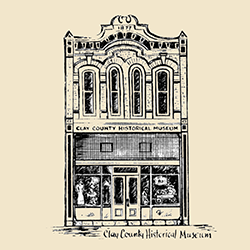History is all around us in Liberty. From the fine homes that have been restored to books recounting historical events. Jesse James, Carrie Nation and Alexander Doniphan all are well known figures of our past. The county courthouses and the Liberty Arsenal are well documented buildings. But there are lesser-known events and institutions that, while now gone and mostly forgotten, shaped the community. One of these is the County Home or as it was known, the Poor Farm. Originally built by Clay County just outside of the boundaries of Liberty, it was adjacent to, and eventually annexed into the city. Built in 1871 in what was then called “Robertson Station” for the railway stop there, it was out of an evolving concern for the indigent population of the area.
Prior to this Home being built, friends and family took care of the needy as the neighborly thing to do. Then the county made allowances for people to shelter the unfortunates in their homes for payment. As with many good ideas, this worked for some and not others; it was not the best solution for the growing population of the county. So, in 1871 just over 100 acres was acquired on which to erect suitable housing for what local newspapers described as “inmates” along with the outbuildings needed to care for and support the farm. It became a self-sustaining home for the poor, elderly and sick who had nowhere else to go.
As the years went on, the condition of the main building deteriorated and in 1913 a bond was passed for a new Home. This stone and cement structure boasted accommodations for 60 people who could apply to the county or be recommended by the county doctor to live there. The farm itself provided not only the food for the residents but the opportunity to live and work as they wished. Cattle and hogs were raised, fields were planted, and gardens tended by those wishing to work. For decades the superintendent and his family took a hands-on approach by living on the property. A farm worker, maid, cook and attendant were also employed at various times.
An article in the 1944 “Liberty Advance” offered an article entitled, “Coolest, Most Beautiful Spot in Clay – the County Home,” reported 27 patients, many around 80 years of age, were in residence at that point and the farm was well run with fresh milk, eggs and produce in abundance. The excess was sold, and the money used in support of the farm. The photos reflect a beautiful building surrounded by rock walls and flowering shrubbery; a place of peaceful reflection for people who had witnessed much history to live out their days. One such resident was Jesse James, who in an article written by his Iowa cousin recounted how well run the county home was by Mr. Baldwin. There was no reason given why he had a room at the home, or a date attached to the article. It makes an interesting twist and bolsters the opinion of the home operating as a “home” to many.
The County Home closed its doors in 1969 due to the costs involved in maintaining the building. Residents were moved to a nursing home in Excelsior Springs. The farm continued with a caretaker living on the property while the buildings were used as storage. The Civil Air Patrol and the Clay County Sheriff’s Patrol used several rooms at the west end of the building which had housed so many people over the years.
Finally, left to decay, it was razed. A sad ending to an institution that had shown the best of the community – the care for its own. A community who values their people as well as their history.
Chery Carr Holtman, curator, Clay County Museum
